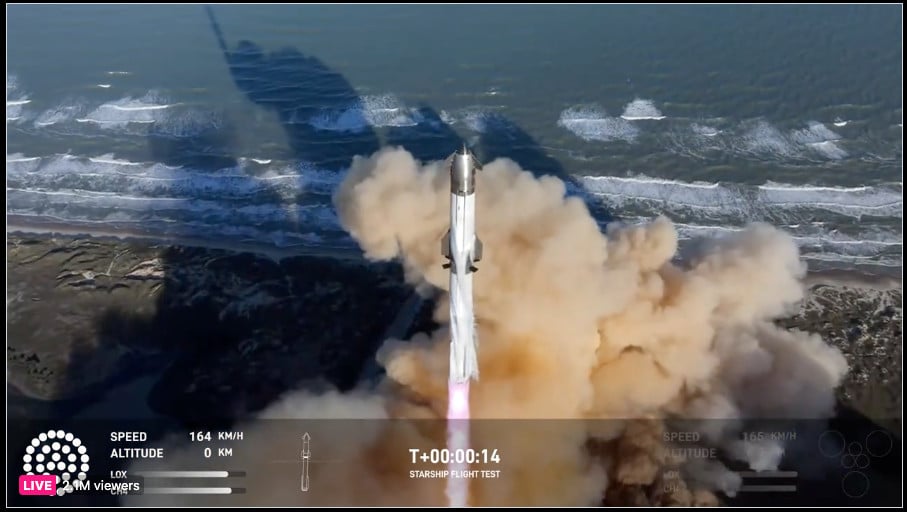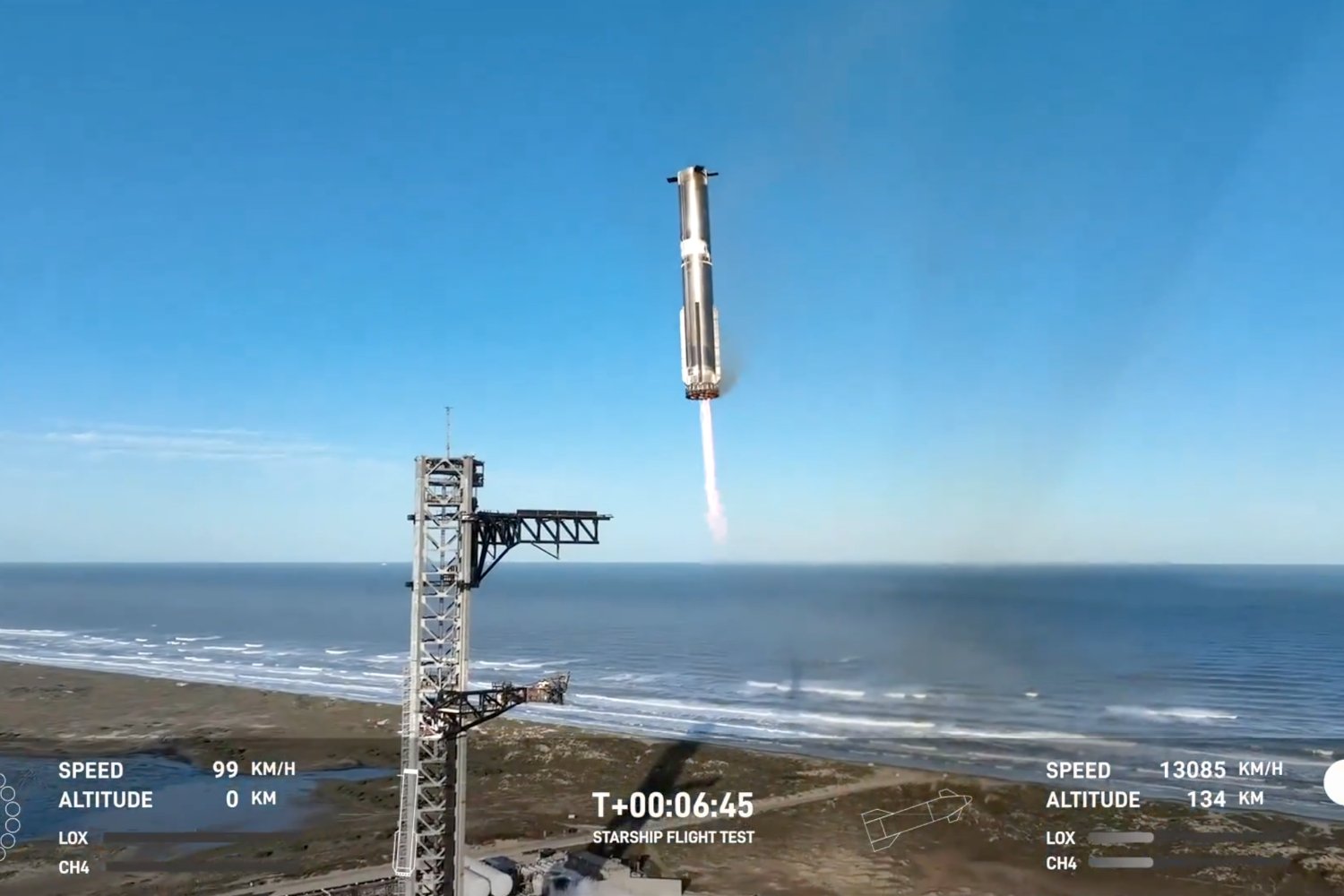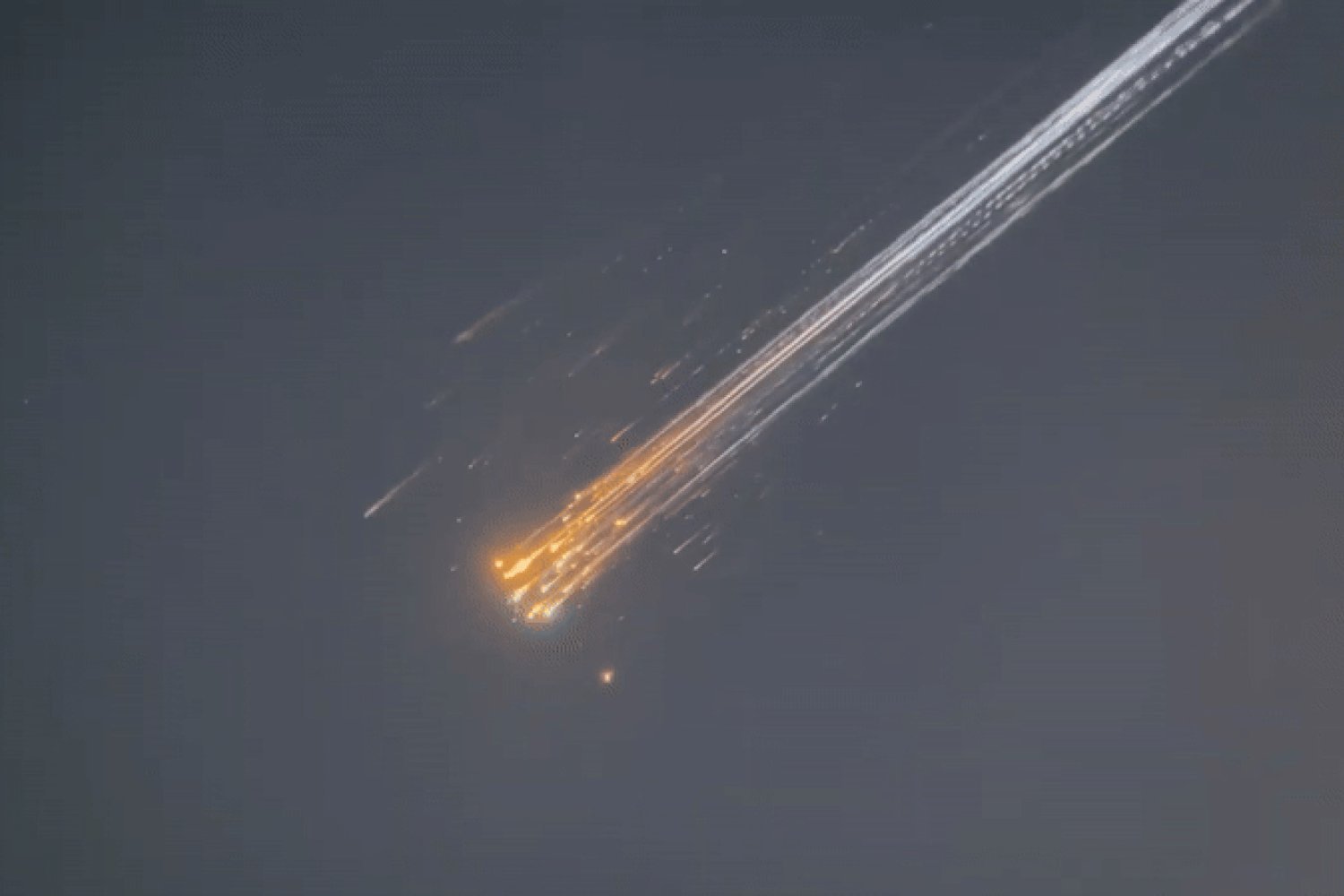Starship, SpaceX’s ambitious fully reusable launch system, took another leap forward and a subsequent stumble during its seventh test flight on January 16, 2025. While the Super Heavy booster successfully landed back on the launch mount, caught by the “Mechazilla” tower for the second time in the program’s history, the upper stage encountered an anomaly and was lost during ascent.
 Starship launching on its seventh test flight.Starship lifts off for its seventh test flight, demonstrating the power of its 33 Raptor engines. © SpaceX
Starship launching on its seventh test flight.Starship lifts off for its seventh test flight, demonstrating the power of its 33 Raptor engines. © SpaceX
The 403-foot-tall (123-meter) rocket launched from Boca Chica, Texas, at 5:37 p.m. ET. The initial stages of the flight proceeded as planned, with hot staging and booster engine cutoff occurring shortly before the three-minute mark. As the upper stage continued its upward trajectory, the Super Heavy booster began its descent back to Earth.
Approximately seven minutes into the mission, flight controllers authorized the booster catch attempt. The Mechazilla launch tower, equipped with its distinctive “chopstick” arms, successfully captured the returning booster, marking the second successful catch since the first on October 13, 2024, during Starship’s fifth test flight. This repeated success further validates the catch tower concept and reinforces confidence in Starship’s potential for full reusability.
Mechazilla catches the Super Heavy booster.Mechazilla successfully catches the Super Heavy booster for the second time. © SpaceX
Unfortunately, the upper stage experienced an anomaly during its ascent. This unforeseen event led to the loss of the vehicle before the 12-minute mark, preventing the planned deployment of mock Starlink satellites. Final telemetry data indicated a speed of 13,246 miles per hour (21,317 kilometers per hour) and an altitude of 91 miles (146 kilometers) before communication was lost.
This seventh Starship test flight featured an upgraded upper stage design, representing the first upper stage failure since the early integrated testing phase. The introduction of design modifications essentially created a new vehicle configuration, requiring systems to interact for the first time in flight. The SpaceX broadcast mentioned “a couple of engines dropped out” prior to the loss of communication and the apparent explosion of the vehicle.
The Starship upper stage experiences an anomaly during ascent.The Starship upper stage breaks apart during its ascent, highlighting the challenges of spaceflight. © A. Pettit
While the exact cause of the anomaly remains undetermined, SpaceX is expected to release further details in the near future. The company has a history of utilizing test flight data, including failures, to refine designs and improve reliability. As stated in a SpaceX tweet, “With a test like this, success comes from what we learn, and today’s flight will help us improve Starship’s reliability.”
SpaceX continues to make steady progress towards operationalizing Starship, with each test flight providing valuable insights. Once fully operational, Starship is poised to revolutionize space access, enabling the deployment of large constellations of Starlink satellites and payloads for various customers. Its impressive lift capacity of 150 metric tons to low Earth orbit, facilitated by its 33 Raptor engines, opens up possibilities for larger and more complex spacecraft designs.
Furthermore, Starship plays a crucial role in NASA’s Artemis program, serving as the human landing system for future lunar missions. Beyond these immediate goals, SpaceX CEO Elon Musk envisions Starship as the key to establishing a human presence on Mars, ultimately transforming humanity into a multi-planetary species.










